Car advice
Latest articles
-
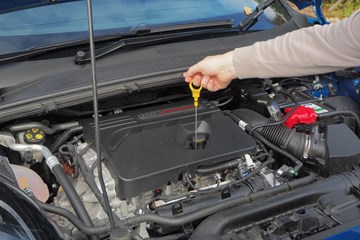 How to perform pre-holiday car health checks at homeGetting ready for a holiday road trip? Keeping your car in top shape doesn’t have to mean endless trips to the garage. With a few simple checks you can do...
How to perform pre-holiday car health checks at homeGetting ready for a holiday road trip? Keeping your car in top shape doesn’t have to mean endless trips to the garage. With a few simple checks you can do... -
 The best car cooler boxes for the perfect summer road trip 2025Those summer road trips are always a joy. With no deadline to reach your destination (if you even have one), you can take the time to enjoy the drive accompanied...
The best car cooler boxes for the perfect summer road trip 2025Those summer road trips are always a joy. With no deadline to reach your destination (if you even have one), you can take the time to enjoy the drive accompanied... -
-
 UK speed limits explained: what are the legal limits and why?Speed limits are one of the most basic rules of the road, but they’re not always as simple as they seem. With different limits for different roads, changes to urban...
UK speed limits explained: what are the legal limits and why?Speed limits are one of the most basic rules of the road, but they’re not always as simple as they seem. With different limits for different roads, changes to urban... -
 Driving in Europe - everything you need to knowThousands of British people find themselves driving in Europe every year, particularly during the summer months. You might be travelling there by plane and hiring a car, or using a...
Driving in Europe - everything you need to knowThousands of British people find themselves driving in Europe every year, particularly during the summer months. You might be travelling there by plane and hiring a car, or using a... -
 What to do if you've put the wrong fuel in your car - step by stepWe’ve all been there. You pull into a fuel station at the end of a long day, tired and keen to get home, you pick up the first available pump....
What to do if you've put the wrong fuel in your car - step by stepWe’ve all been there. You pull into a fuel station at the end of a long day, tired and keen to get home, you pick up the first available pump.... -
-
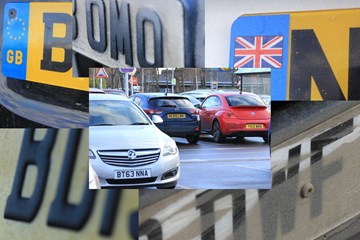 UK number plate Law 2025: legal rules, sizes and finesNumber plates have been a feature of cars for so long that it’s easy to forget they’re there – but they’re more complex than you might first expect. When buying...
UK number plate Law 2025: legal rules, sizes and finesNumber plates have been a feature of cars for so long that it’s easy to forget they’re there – but they’re more complex than you might first expect. When buying... -
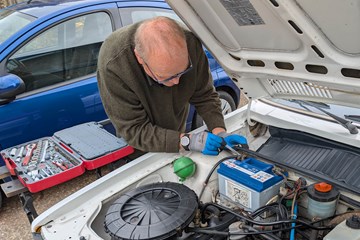 How to change a car battery: step-by-step instructions and expert tipsThere’s a particular sort of dread that sets in when you turn the key, or press the starter button, and your car doesn’t start. Slow cranking, a few pathetic clicks...
How to change a car battery: step-by-step instructions and expert tipsThere’s a particular sort of dread that sets in when you turn the key, or press the starter button, and your car doesn’t start. Slow cranking, a few pathetic clicks... -
-
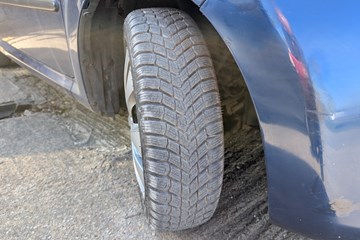 Tyre Test: Davanti Alltoura all-season tyres 12 month testWe’ve fitted a full set of Davanti Alltoura 4-Seasons tyres to our long-term 2007 Citroen C1 and we’re running them for a year to see how all-season tyres cope with...
Tyre Test: Davanti Alltoura all-season tyres 12 month testWe’ve fitted a full set of Davanti Alltoura 4-Seasons tyres to our long-term 2007 Citroen C1 and we’re running them for a year to see how all-season tyres cope with... -
 The current UK law on using your mobile phone while drivingMost of us like to stay entertained while driving, whether by making a quick call or playing music on our smartphones. Using a phone while driving has been illegal in...
The current UK law on using your mobile phone while drivingMost of us like to stay entertained while driving, whether by making a quick call or playing music on our smartphones. Using a phone while driving has been illegal in... -
 How to clean your car at home: step-by-step guideThere’s something genuinely satisfying about cleaning your car at home. I’ve lost count of the hours spent on my driveway transforming one of my careworn old bangers into something that...
How to clean your car at home: step-by-step guideThere’s something genuinely satisfying about cleaning your car at home. I’ve lost count of the hours spent on my driveway transforming one of my careworn old bangers into something that... -
-
 Everything you need to know about cleaning your car’s interiorKeeping your car clean on the outside is one thing, but the real satisfaction comes from stepping into a spotless, fresh-smelling cabin. As someone who spends more time than I...
Everything you need to know about cleaning your car’s interiorKeeping your car clean on the outside is one thing, but the real satisfaction comes from stepping into a spotless, fresh-smelling cabin. As someone who spends more time than I... -
 How much is a speeding fine and will I get points on my license?We all like to think that we’re experienced drivers who stick to the UK speed limits, but if you stray over the posted limit, do you know how much a...
How much is a speeding fine and will I get points on my license?We all like to think that we’re experienced drivers who stick to the UK speed limits, but if you stray over the posted limit, do you know how much a... -
-
 The best wired CCTV systems UK 2025Why should wired CCTV systems be considered to increase our security game? For one, the ‘stuff’ we keep around our home, garage and garden is becoming more and more sophisticated...
The best wired CCTV systems UK 2025Why should wired CCTV systems be considered to increase our security game? For one, the ‘stuff’ we keep around our home, garage and garden is becoming more and more sophisticated... -
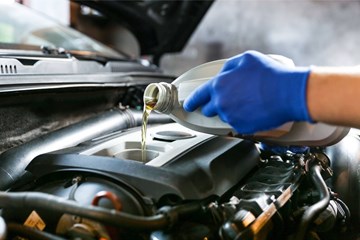 Best 10W-40 engine oil you should useEngine oils are essential for keeping an engine running, and 10W-40 engine oil is fairly common with engines that rev highly and have a few miles on them. Most modern...
Best 10W-40 engine oil you should useEngine oils are essential for keeping an engine running, and 10W-40 engine oil is fairly common with engines that rev highly and have a few miles on them. Most modern... -
 Say goodbye to engine gunk: Best petrol cleaners you can use todayYou may not realise it immediately, but a petrol engine cleaner can be the healthiest thing for your engine when you’re achieving high miles. Of course, good engine oil is...
Say goodbye to engine gunk: Best petrol cleaners you can use todayYou may not realise it immediately, but a petrol engine cleaner can be the healthiest thing for your engine when you’re achieving high miles. Of course, good engine oil is... -
-
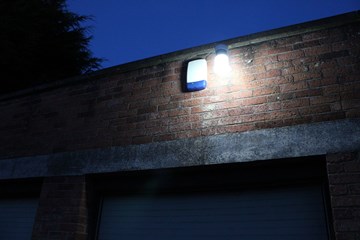 Keep your garage secure with the best garage alarmsOut of sight is out of mind, and that could be true of your garage. Garages will often contain many valuable items, such as cars, bikes and tools. These things...
Keep your garage secure with the best garage alarmsOut of sight is out of mind, and that could be true of your garage. Garages will often contain many valuable items, such as cars, bikes and tools. These things... -
 The best garage door security productsWhatever your garage might or might not be, it’s always worth assessing your security products and your garage door security to ensure that the things you care about, whether your...
The best garage door security productsWhatever your garage might or might not be, it’s always worth assessing your security products and your garage door security to ensure that the things you care about, whether your... -
-
 The best outdoor security cameras UK 2025They are the cream of the crop when it comes to home and garage security products, the best outdoor security cameras will keep a watchful eye over your cars. Often,...
The best outdoor security cameras UK 2025They are the cream of the crop when it comes to home and garage security products, the best outdoor security cameras will keep a watchful eye over your cars. Often,... -
 The best portable blender for campingWhat’s that, you’ve never considered taking a portable blender as part of your camping cookware? You’ve deprived yourself of delicious and healthy smoothies, protein drinks and soups? Perhaps it’s time...
The best portable blender for campingWhat’s that, you’ve never considered taking a portable blender as part of your camping cookware? You’ve deprived yourself of delicious and healthy smoothies, protein drinks and soups? Perhaps it’s time... -
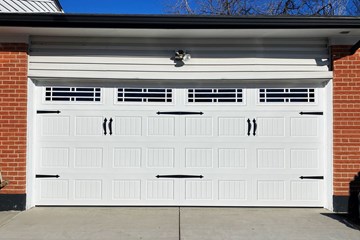 The best garage door locksQuite often, when we arrive home at the end of the day, we park one of our most valuable possessions in the garage without giving security a second thought—maybe now...
The best garage door locksQuite often, when we arrive home at the end of the day, we park one of our most valuable possessions in the garage without giving security a second thought—maybe now... -
Most popular articles
-
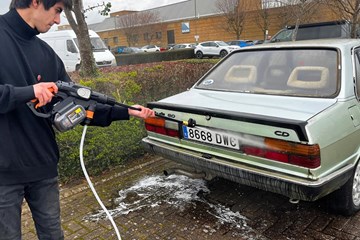 Best cordless pressure washers tested: Powerful, portable options that get the job doneWe all love how powerful and convenient pressure washers are, but there are going to be times when a cordless pressure washer will become very useful. The spring and summer...
Best cordless pressure washers tested: Powerful, portable options that get the job doneWe all love how powerful and convenient pressure washers are, but there are going to be times when a cordless pressure washer will become very useful. The spring and summer... -
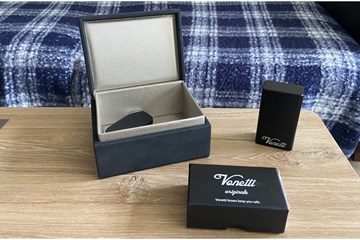 Best faraday boxes for car keys 2025: tested signal-blocking solutions to prevent keyless theftWhat are Faraday boxes all about? That’s a good question. It does sound like the kind of thing HG Wells might have used to get his time machine going, but...
Best faraday boxes for car keys 2025: tested signal-blocking solutions to prevent keyless theftWhat are Faraday boxes all about? That’s a good question. It does sound like the kind of thing HG Wells might have used to get his time machine going, but... -
-
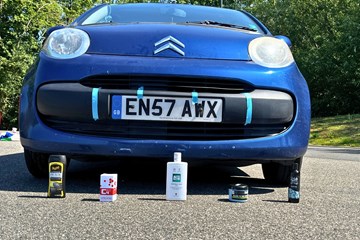 Discover the best black trim restorers to revive your car’s shine tested by our expertsMost cars made since the late 1980s feature black plastic exterior parts, which are prone to fading and discolouration over time. Whether it’s the large bumper panels on modern vans...
Discover the best black trim restorers to revive your car’s shine tested by our expertsMost cars made since the late 1980s feature black plastic exterior parts, which are prone to fading and discolouration over time. Whether it’s the large bumper panels on modern vans... -
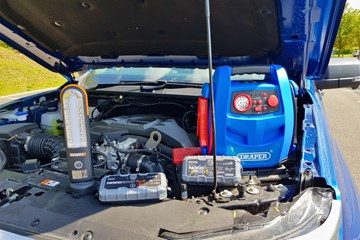 The best jump starters tried and tested by Parkers 2025The beefiest of battery chargers, car jump starters can sit ready to inject a brief but powerful jolt of electricity into a dead battery to get an engine running again....
The best jump starters tried and tested by Parkers 2025The beefiest of battery chargers, car jump starters can sit ready to inject a brief but powerful jolt of electricity into a dead battery to get an engine running again.... -
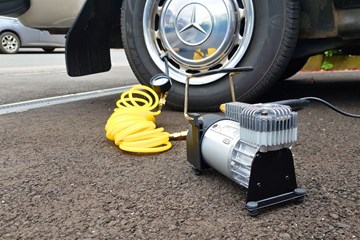 Flat tyre? Not on our watch – The best tyre inflator compressors are here to rescue youWhy are tyre inflator compressors so important? Your tyres are the only part of a car that comes into contact with the road, so it’s vitally important to keep the rings...
Flat tyre? Not on our watch – The best tyre inflator compressors are here to rescue youWhy are tyre inflator compressors so important? Your tyres are the only part of a car that comes into contact with the road, so it’s vitally important to keep the rings... -
-
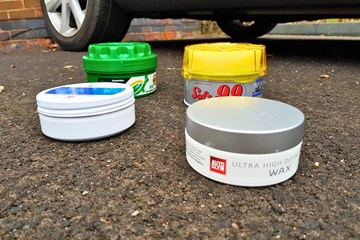 The best car wax tested by Parkers 2025: keep your vehicle sparkling cleanIf you want to give your car’s paint an extra protective coat, you need car wax. This hardy substance differs from your regular car cleaning products as it adds a...
The best car wax tested by Parkers 2025: keep your vehicle sparkling cleanIf you want to give your car’s paint an extra protective coat, you need car wax. This hardy substance differs from your regular car cleaning products as it adds a... -
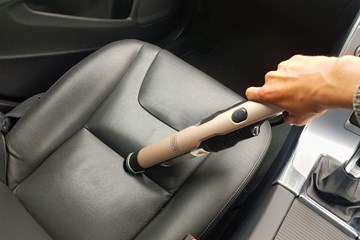 The best handheld vacuum cleaners tested 2025Small in size and able to deal with dust any time you want, the best handheld vacuum cleaners will prove invaluable if you like crumb-free upholstery. You wouldn’t think twice...
The best handheld vacuum cleaners tested 2025Small in size and able to deal with dust any time you want, the best handheld vacuum cleaners will prove invaluable if you like crumb-free upholstery. You wouldn’t think twice... -
-
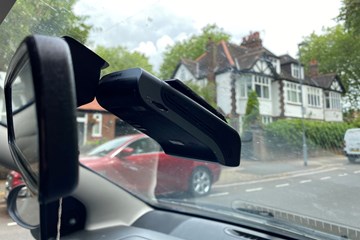 Caught on camera: best dashcams to buy in 2025 for clear, safe drivingIn real life, road incidents don’t come with dramatic music or slow-motion build-ups – they happen in an instant, without warning. One moment, you’re cruising along, and the next, chaos....
Caught on camera: best dashcams to buy in 2025 for clear, safe drivingIn real life, road incidents don’t come with dramatic music or slow-motion build-ups – they happen in an instant, without warning. One moment, you’re cruising along, and the next, chaos.... -
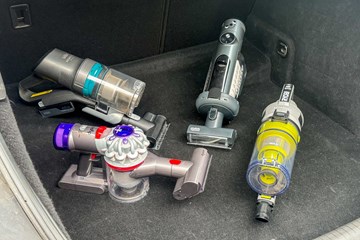 The best rated car vacuum cleaners in the UK for 2025Keeping your car’s interior clean is much easier than it used to be, thanks to massive developments in car vacuum cleaner technology. Previously, it was a case of choosing between...
The best rated car vacuum cleaners in the UK for 2025Keeping your car’s interior clean is much easier than it used to be, thanks to massive developments in car vacuum cleaner technology. Previously, it was a case of choosing between... -
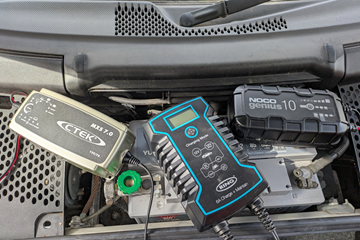 The best car battery trickle chargers you can buy in 2025Among all the car battery chargers, trickle chargers are likely the most useful for car owners. Designed to keep your battery from going flat when the car isn’t in use,...
The best car battery trickle chargers you can buy in 2025Among all the car battery chargers, trickle chargers are likely the most useful for car owners. Designed to keep your battery from going flat when the car isn’t in use,... -
-
 The current UK law on using your mobile phone while drivingMost of us like to stay entertained while driving, whether by making a quick call or playing music on our smartphones. Using a phone while driving has been illegal in...
The current UK law on using your mobile phone while drivingMost of us like to stay entertained while driving, whether by making a quick call or playing music on our smartphones. Using a phone while driving has been illegal in... -
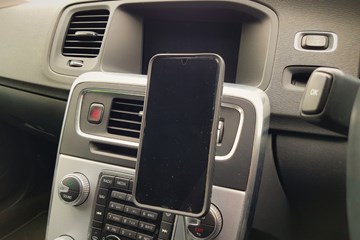 The Best MagSafe car mounts tested by Parkers 2025MagSafe car mount technology was developed by Apple and launched in the iPhone 12 series and then in all of the subsequent generations of iPhones that followed. It’s a form...
The Best MagSafe car mounts tested by Parkers 2025MagSafe car mount technology was developed by Apple and launched in the iPhone 12 series and then in all of the subsequent generations of iPhones that followed. It’s a form... -
-
 We investigated the best car shampoo for pristine paintwork: tried and tested by Parkers 2025The bulk of car cleaning will involve car shampoo, so it really is important to pick the best product possible. A good car shampoo does more than simply remove grit...
We investigated the best car shampoo for pristine paintwork: tried and tested by Parkers 2025The bulk of car cleaning will involve car shampoo, so it really is important to pick the best product possible. A good car shampoo does more than simply remove grit... -
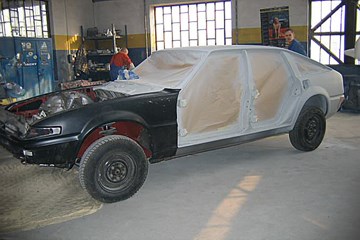 How much to respray a car and is it worth the cost?I’ve always loved to see a freshly painted older car. There’s something about a deep, glossy finish that can completely transform a tired-looking motor and make it feel almost new...
How much to respray a car and is it worth the cost?I’ve always loved to see a freshly painted older car. There’s something about a deep, glossy finish that can completely transform a tired-looking motor and make it feel almost new... -
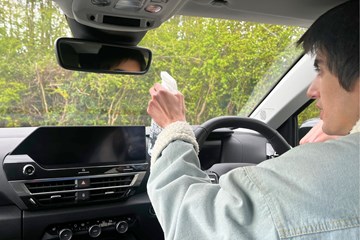 A crystal-clear winner: the best car glass cleaner tried and tested 2025During car cleaning and detailing sessions, the right glass cleaner can sometimes be overlooked. Glass is great for visibility, but any grease or grime will be incredibly noticeable as it...
A crystal-clear winner: the best car glass cleaner tried and tested 2025During car cleaning and detailing sessions, the right glass cleaner can sometimes be overlooked. Glass is great for visibility, but any grease or grime will be incredibly noticeable as it... -
-
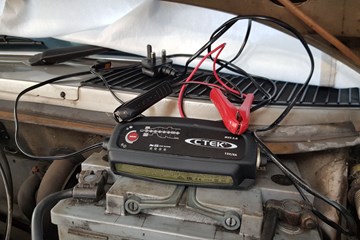 The best smart battery charger for a healthy car batteryTo maintain the health and charge of your car’s battery, you should consider one of the best smart battery chargers available. These are the cream of the crop in the...
The best smart battery charger for a healthy car batteryTo maintain the health and charge of your car’s battery, you should consider one of the best smart battery chargers available. These are the cream of the crop in the... -
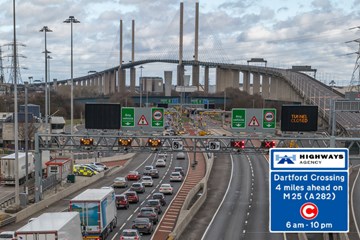 Dartford crossing charge: How to pay and avoid finesThe Dartford Crossing – the stretch of the M25 that crosses the River Thames between Dartford and Thurrock – is one of the UK’s busiest roads. But with no toll...
Dartford crossing charge: How to pay and avoid finesThe Dartford Crossing – the stretch of the M25 that crosses the River Thames between Dartford and Thurrock – is one of the UK’s busiest roads. But with no toll... -
-
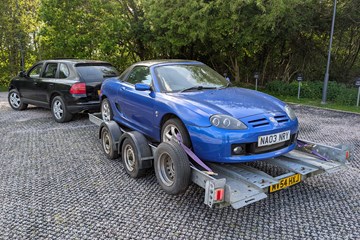 UK Towing Capacity Guide: What can your car tow?Towing massively increases your car’s ability to carry stuff, from garden waste to a caravan, to a horsebox, to another car. But it’s vitally important that you tow legally and...
UK Towing Capacity Guide: What can your car tow?Towing massively increases your car’s ability to carry stuff, from garden waste to a caravan, to a horsebox, to another car. But it’s vitally important that you tow legally and... -
 The best rain repellents for cars tried and tested 2025Why are rain repellents worth considering? Given Britain’s famously moist weather, driving around in the wet is something we’re all used to. But driving in damp and rainy conditions with...
The best rain repellents for cars tried and tested 2025Why are rain repellents worth considering? Given Britain’s famously moist weather, driving around in the wet is something we’re all used to. But driving in damp and rainy conditions with... -
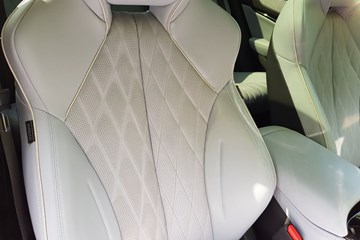 The best car leather cleaners to keep your car looking fresh and luxuriousCar leather cleaners might not be at the forefront of your mind when it comes to maintaining the condition of your vehicle. That honour will probably go towards car shampoos...
The best car leather cleaners to keep your car looking fresh and luxuriousCar leather cleaners might not be at the forefront of your mind when it comes to maintaining the condition of your vehicle. That honour will probably go towards car shampoos... -
Parkers expert car advice
Car ownership can be a worry for many drivers. Parkers is here to make your life easier – by answering common questions and guiding you to make the best decisions, whether you're buying a car, selling or trying to work out your tax bill.
This section is updated daily and we hope you find our stories helpful. They're written in plain English and we aim to take the pain out of car ownership.
We're also here to help with your car purchase
Don't forget to check out these sections if you need more specific assistance:
- Car finance advice
- Best cars: Parkers top recommendations
- Search new and used cars for sale on Parkers
- Click here for a Parkers free car valuation
You can contact us for help with car-related problems, and we'll try and get back to you

